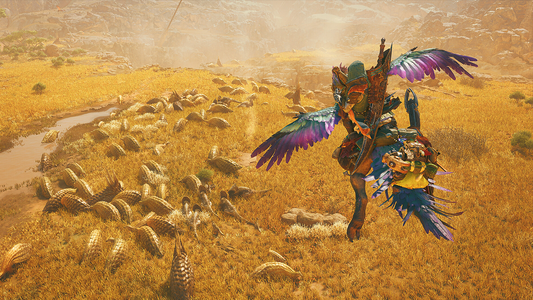Overview
The interactive narrative is still uncharted territory. Designers haven’t quite figured out where to stand between player agency and guided storytelling, branching stories and linear ones, and other huge matters about stories in games.
This exploration is far from over, but it’s moving fast. Every day new narrative-based games come out, and many of them are actually trying new ways to convey narrative.
Anyway, I’m not here to go further in this exploration. As game designers, we must not only conceive the story, but find a way to deliver it. Interactivity means this too. The audience of our story won’t just sit and listen to it. Our audience will look for the story, or run into it while experiencing pure gameplay. On the opposite, sometimes our audience will do everything he can to avoid it. Our job is to let them be immersed in our narrative, without necessarily force them to stop playing while doing so. However, sometimes we forget about the existence of many ways and spaces for our stories to be experienced. I’ve come up with the following list as a reminder of these ways. It’s a memento of gameplay moments, items, styles, and every possible part of the game that can be actually used as an instrument for narrative delivery.
Before we start, take into account the following golden rules:
Don’t stick to only one. Almost every game uses multiple ways to deliver narrative. If you do so, you will prevent monotony. Furthermore, every player is different. Some will avoid some kind of ways, but will eventually occur in others, more fitting their personal gameplay style. You need to diversify
Those methods are NOT mutually exclusive. In fact, many of your narrative moments will fall into multiple categories
Interactivity vs Narrative. Playing and understanding the story at the same time can be hard. If a player is busy in a complex gameplay moment, he could have some problem following someone speaking to him. This doesn’t mean narrative and gameplay moments should be separate: on the opposite, the more we merge those features, the more harmony in the experience will be achieved. But keep always in consideration the player and his multitasking limit
Show > Tell
The use of words is reduced. The player understands the story not while reading something, but with visual tools: pictures, photos, NPCs, and creatures' behaviors towards him and between one each other, object degradation, level design, pace, and much more. More than a single tool, it is a quality that can be applied to other methods. Do it as much as possible, always.
PROS 
yes

yes
The most elegant way of delivering narrative
Highly effective, understandable at every level of interest by the player, from the overall tone of the game to small details of the story
Immediate and immersive
CONS 
no

no
The hardest to build. It requires combined work by different roles of the team. It requires a strong art direction
Detailed info is harder to deliver, only proactive players will understand deep narrative
EXAMPLES 
enlightened

enlightened
Half-Life 2
Journey
Inside
Interrupting gameplay / Cutscenes
The gameplay is paused, forcing the player to deal ONLY with the narrative, having sometimes the opportunity to skip it according to the importance of the passage. Cutscenes are the classic and most expensive way to do it. Use it when you need the player to experience some beat of the story.
PROS 
yes

yes
The player receives the content completely, with no distraction, preventing missing important passages
Overall high control on the passage
High quality perceived
If well done, it can be highly rewarding, preventing the player to suffer for the agency deprivation
CONS 
no

no
No interactivity. Players could drop the controller, something you never want to happen
The narrative must be engaging.
Can be highly expensive
Requires competence in cinematography
EXAMPLES 
enlightened

enlightened
Metal Gear Saga





































